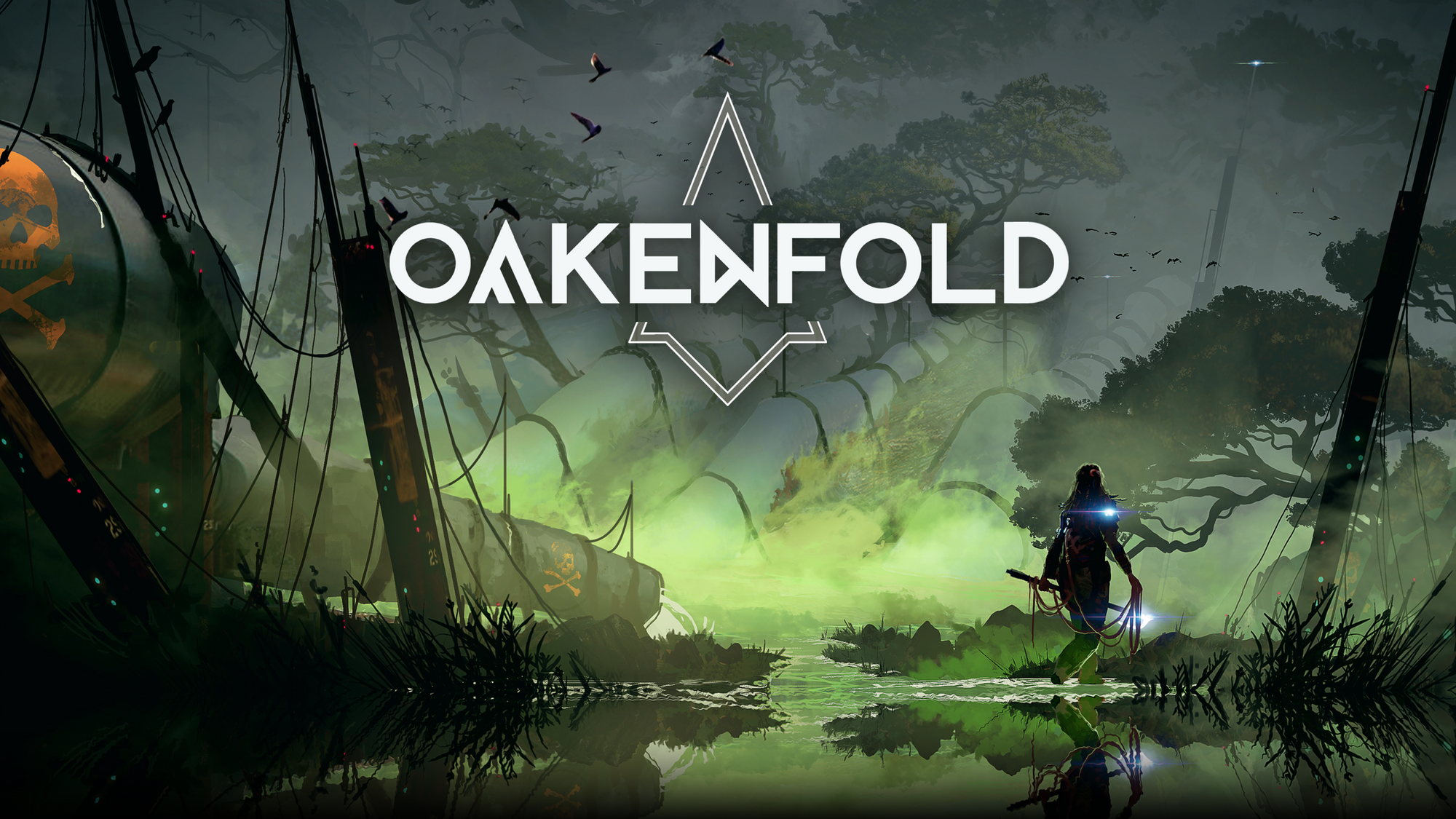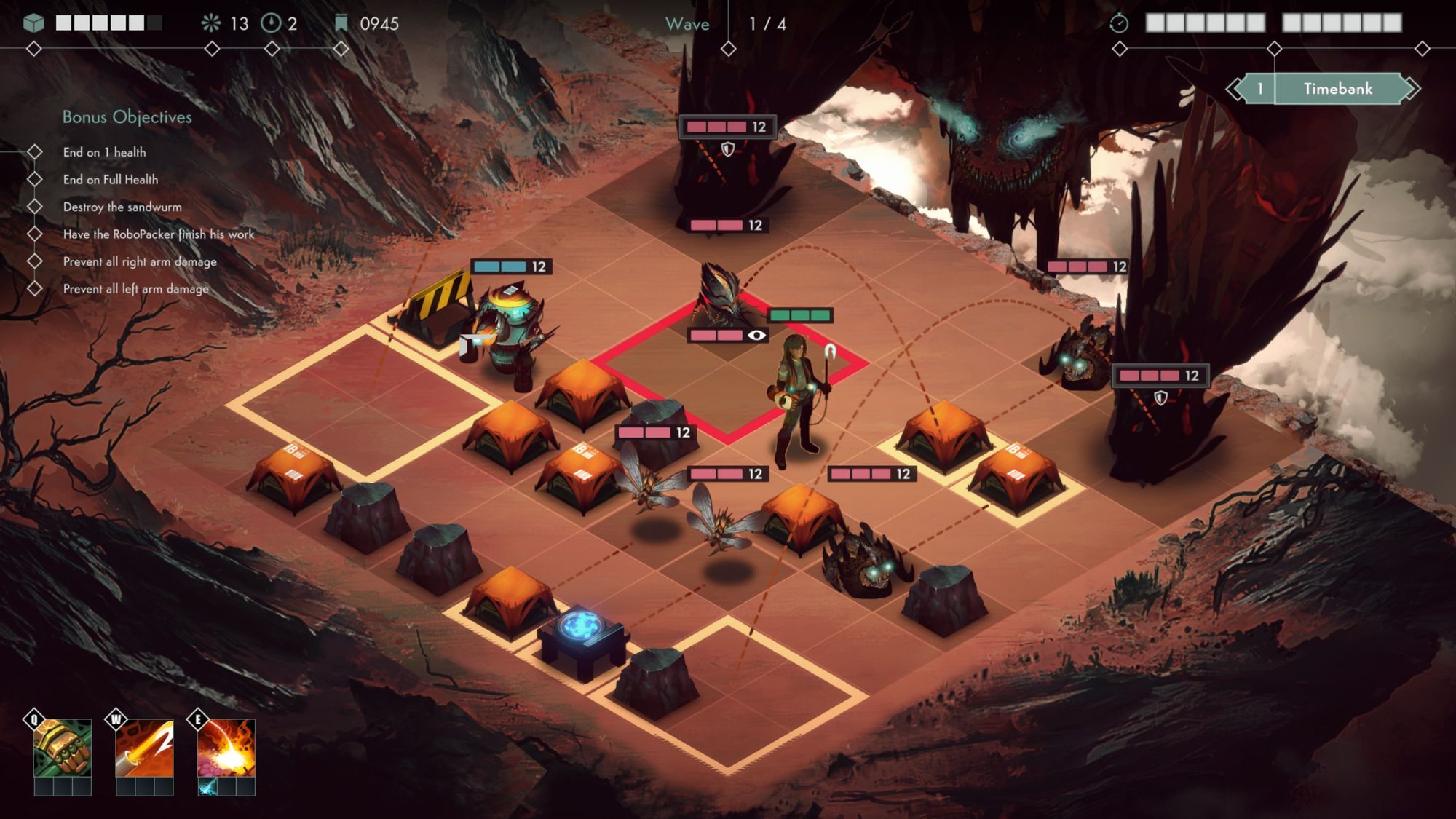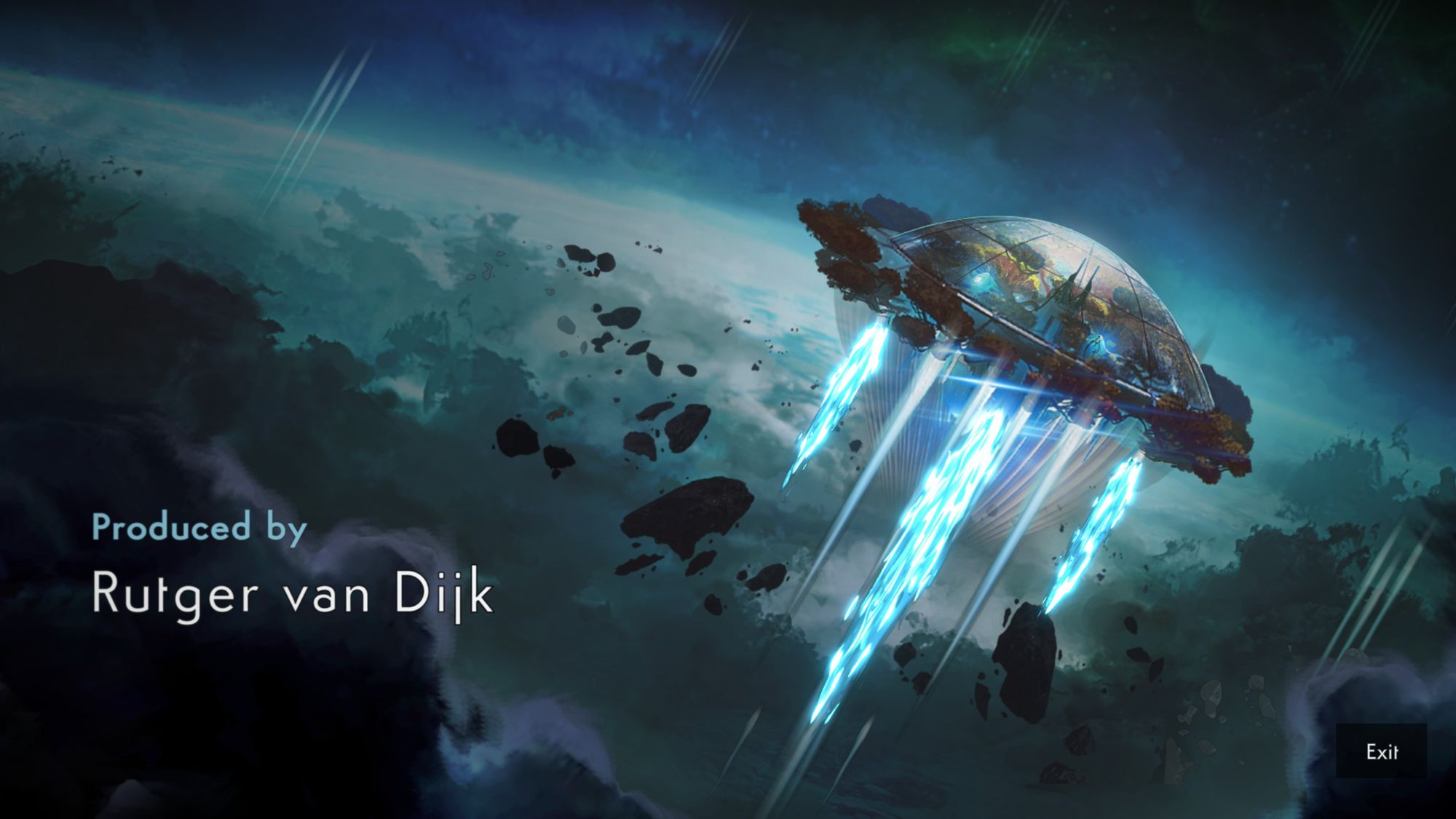Tactical TimeScrubbing with Oakenfold
A polished tactical experience that should keep you pondering from start to finish

In games like Chess, it is critical to envision, before making any moves, how each choice might play out, perhaps including actions that would result in several turns later. If you’re like me, there’s a good chance that even if you can figure out how things might go, you’ll get lost somewhere in your train of thought and make a move that you had previously ruled out for reasons that become incredibly obvious mere seconds later. But what if you could play out each of these scenarios using an undo button until you arrive at a board state that you find most favorable? That is one of the central tenets of Oakenfold.
Laying the Groundwork
Oakenfold is a grid-based, roguelike strategy game with a twist: you can rewind time. With a simple flick of your mouse wheel, you can freely move forward and backward in time to test out as many different solutions to the problem at hand. You’re faced with the straightforward goal of protecting the limited cargo crates you have from the various bugs, brutes, and sandworms that threaten to destroy them. All you have to do is traverse what's left of Earth while fending off foes long enough to escape via your terrarium spaceship.

Before you set off on each run, you're faced with choosing between three different “mindsets.” The survival mindset is focused on a straightforward approach, pushing and pulling your enemies into a position that's more favorable to you. The agile mindset puts nimble traversal at the forefront, which is especially helpful on procedurally-generated maps. Lastly, and perhaps the most difficult to learn, is the scientific mindset, which allows you to make use of a robot companion and other technology to pull off technical flourishes.
Upon starting your journey you'll set off in a direction of your choosing with sets of branching pathways. In most stages you’ll be protecting cargo by dealing with your enemies. Other stages have you protecting additional assets or sprinting through a flurry of foes. Most stages will also include various bonus objectives that can be completed for additional resources. These additional mission parameters make the game a true balancing act, providing a delicate tradeoff between gathering new upgrade materials and protecting the limited resources you have.
This brings me to the upgrade system. You’ll typically find crafting stations on the map of each stage where you can either expand your capabilities or upgrade the ones you already have. An important thing to note it that when you craft an upgrade, you can rewind time within that same stage and the upgrade will apply retroactively (with certain caveats). In order to pay for these upgrades, you’ll need two resources. The first is the Energy that enemies drop after being defeated, which other enemies can also pick up for a boost in power. The other is your TimeBank, which you can stockpile by saving up unused action points.

The fundamental gameplay features turn-based action. You have 12 actions per turn, divided into two segments. Moving one tile or using one of your abilities consumes one action point, and you can use each of your starting abilities once per segment (up to twice a turn). As mentioned before, you can choose not to spend some of those action points; these stored points will allow you to perform upgrades or, in dire straits, skip stages. The downside is that you may risk losing precious resources to enemy attacks or missing out on bonus objectives if you don’t make the best use of your actions.
The main gameplay feature is the TimeScrubber, which presents an interesting twist. If you’re concerned that being able to rewind actions to your heart’s content would make for a watered-down tactical experience, there’s no need for worry. That’s largely due to the fact that not all of the stages can truly be “solved.” Between protecting your crates, protecting yourself and your allies, completing bonus objectives, acquiring energy orbs, and saving up action points you’re going to have to make some tradeoffs.
The TimeScrubber may allow you to find a single best outcome; but more likely, it will only help you determine the set of Pareto-efficient outcomes (meaning you can’t find an outcome that’s better in one respect without being worse in another). Before you can make the tradeoff decisions that invariably come up in any tactical game, you'll likely need to test out countless action sequences to find out what tradeoffs are even on the table. Additionally, you won’t be able to rely too heavily on the TimeScrubber. In the third and final region of each run, you’ll find temporal anomalies that increase action costs and create points of no return. By the time you reach this area, you’ll hopefully have learned more than a few hard lessons and can better anticipate how situations might play out.
It's All Coming Together

So how well do all these elements work together? The gameplay provides enough of a challenge to keep you engaged throughout each run. In my early trials I’d get through one of the three regions in just over an hour, as I was doing a lot of rewinds to learn how the game worked. The pacing in these early moments was a bit slow, but the moment-to-moment challenge kept me interested long enough to keep going. Once I had improved and grown familiar with how the game works, I was able to complete a run start-to-finish in about the same time it took me to complete the one region originally.
One shining quality of the game is the user interface. It’s very intuitive to use, even when the mechanics that underlie it aren’t immediately clear. For instance, using an ability tells you the damage output and positional changes of not only your enemies but also of your assets and allies (there is friendly fire, some of which can be negated with the proper upgrades). And since you are freely able to rewind your actions, it can be helpful to learn how the collision system works by playing out some of the less favorable action sequences.
The music in the game is also well-suited to the gameplay. It isn't distinctive or overbearing, which works to the game's benefit. Featuring an ambient synth that you might find in Stranger Things, the sound effectively serves the same role that a study/focus-themed music playlist might.
Other features include a weekly challenge, in which the same run is available to all players. This is a chance to hunt for the optimal score that can be achieved. Additionally, should you find the base experience of the game too easy, you can play the game on higher difficulties in exchange for a higher score multiplier.
The main drawback that Oakenfold faces is the lack of variety in gameplay. There aren’t very many types of enemies, and the bosses for each region appear to be fixed for each run. While the procedural generation should help ensure that the runs never play out exactly the same from a tactical perspective, they may not be distinct enough after you’ve played the game for a sufficiently long time. But the game has a way of drawing you into a deep immersion of thought, and ultimately that may be enough to overcome any downsides.

Conclusion
Oakenfold provides an intriguing twist on strategy gameplay. All the pieces come together really well to make it easy for players to lose themselves in the game. The TimeScrubber feature provides a great method for onboarding new players without watering down the experience too much for seasoned players. The weekly challenge provides an excellent outlet for that competitive itch. The story elements may be tough, but the game effectively hones in on the elements that work in its favor. Overall, Oakenfold provides a polished tactical experience that should keep you pondering from start to finish.
